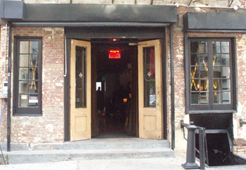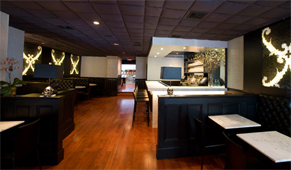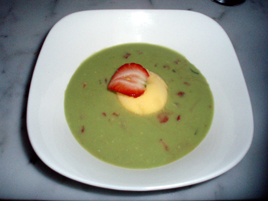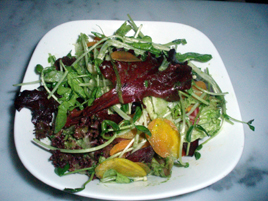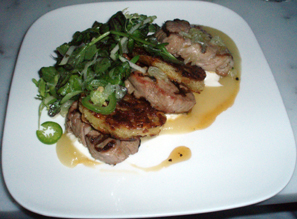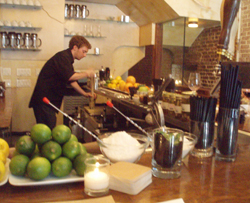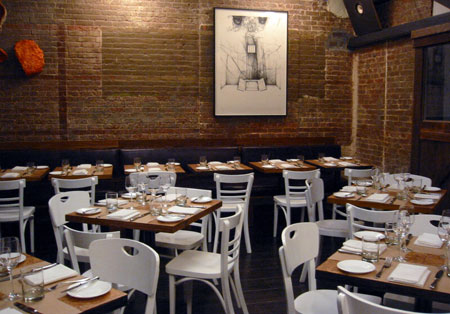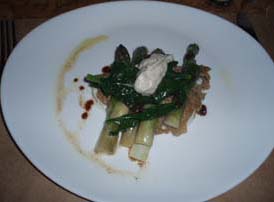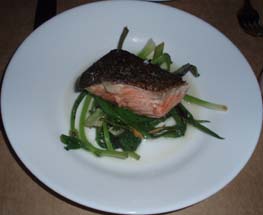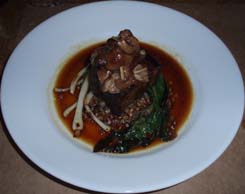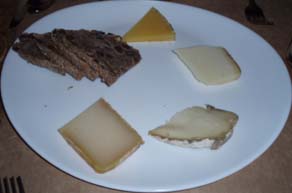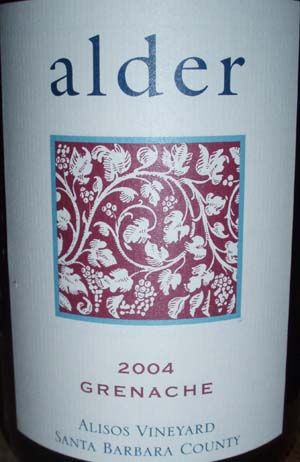Travertine
 Monday, January 25, 2010 at 04:52PM
Monday, January 25, 2010 at 04:52PM 
Note: Travertine closed in July 2011. The space is now Ken & Cook.
*
Travertine is the new Mediterranean-themed restaurant from Manuel Treviño, a former Babbo sous-chef and Top Chef contestant. The restaurant is living proof that even a poor performance on Top Chef is like gold, if you know how to market yourself: Treviño was the fourth chef eliminated during Season 4, but that mediocre effort didn’t stop him from parlaying the show into his own restaurant.
 Travertine arrived in September after a tortured gestation. One proposal after another for the former Little Charlie’s Clam Bar space was shot down by the local community board. It is tough to figure, as Kenmare Street has very little to recommend it, and this place brings night-time civilization to a nearly-barren area that could use some.
Travertine arrived in September after a tortured gestation. One proposal after another for the former Little Charlie’s Clam Bar space was shot down by the local community board. It is tough to figure, as Kenmare Street has very little to recommend it, and this place brings night-time civilization to a nearly-barren area that could use some.
The owners’ proposal, after a previous turn-down, finally squeaked by the community board by a 17–14 vote way back in September 2008. They then had to build the space, and they’ve done a very nice job. Our meal here was no great culinary revelation, but it certainly improved this desolate area.
 I started with drinks at the bar. Wines by the glass were generously priced, in that (as at Babbo) they’re served in a quartino (good for about two glasses), at the same price that most restaurants would serve for one. The bar itself is uncomfortable, with an iron grille blocking the space where one’s legs would normally dangle beneath the stool.
I started with drinks at the bar. Wines by the glass were generously priced, in that (as at Babbo) they’re served in a quartino (good for about two glasses), at the same price that most restaurants would serve for one. The bar itself is uncomfortable, with an iron grille blocking the space where one’s legs would normally dangle beneath the stool.
The menu is Italian-inspired, with a sensibly-edited selection of appetizers ($11–14), pastas ($16–19), entrées ($26–29), and sides ($5). There are no more than half-a-dozen in each category, which I am always happy to see. I’d rather choose from among the six things a chef thinks he can do well, than to puzzle over many dozens.


Serving Pig’s Head Terrine ($13; above left) was once considered daring, but now it’s offered all over the place. This one was merely average. Crispy Maine Shrimp ($14; above right) were served in abundance, but nothing imaginative was done with them.


Picci ($18; above left) were over-sauced and didn’t have much of the promised Italian sausage. Porcini Rubbed Pork Tenderloin was the best dish of the evening, with three generously-sized, tender medallions, crispy artichokes, and cannellini beans that could be addictive all by themselves.
 There is clearly an attempt to be upscale here, with both an amuse-bouche at the start (crostini; pictured at top of post) and and petits-fours (right) at the end. There is no shortage of staff; indeed, during the first part of our meal it seemed that the employees outnumbered the customers, though to be fair this place probably doesn’t get busy till later. Unfortunately, we were stuck with what must have been their worst server, who was intent on rushing us through the meal and tried several times to upsell our order.
There is clearly an attempt to be upscale here, with both an amuse-bouche at the start (crostini; pictured at top of post) and and petits-fours (right) at the end. There is no shortage of staff; indeed, during the first part of our meal it seemed that the employees outnumbered the customers, though to be fair this place probably doesn’t get busy till later. Unfortunately, we were stuck with what must have been their worst server, who was intent on rushing us through the meal and tried several times to upsell our order.
The food struck us as mostly competent, though it wouldn’t win Top Chef. For that matter, it didn’t win Top Chef, so there. However, the stupid Community Board have got a restaurant that improved their neighborhood.
Travertine (19 Kenmare Street between Elizabeth Street & Bowery)
Food: *
Service: *
Ambiance: *
Overall: *

























